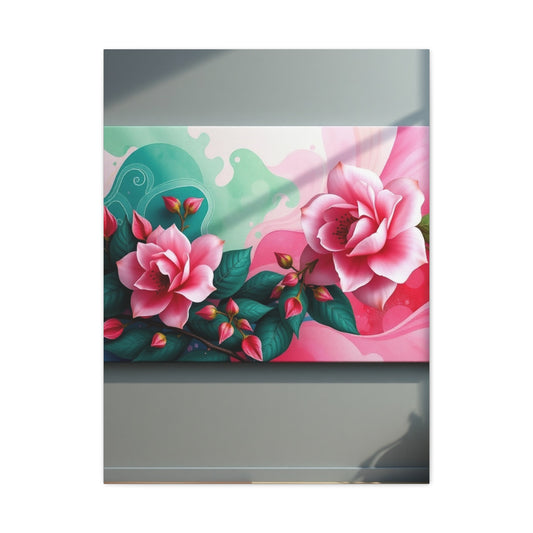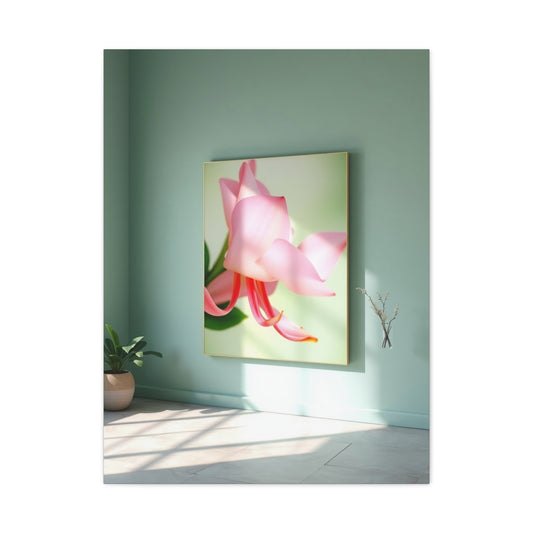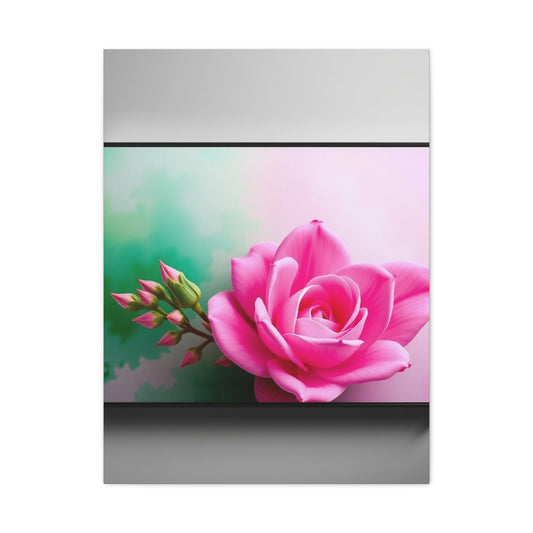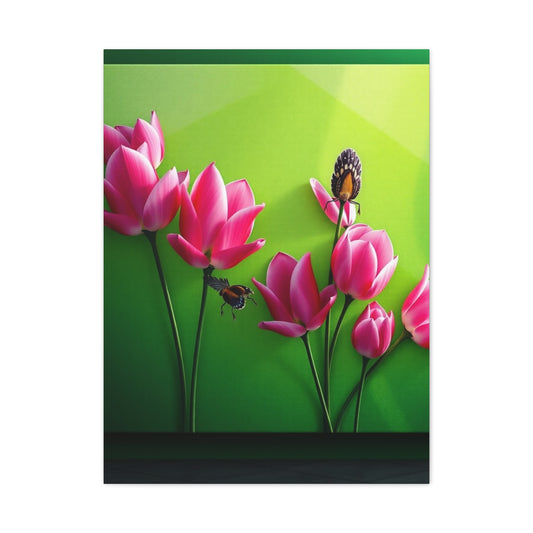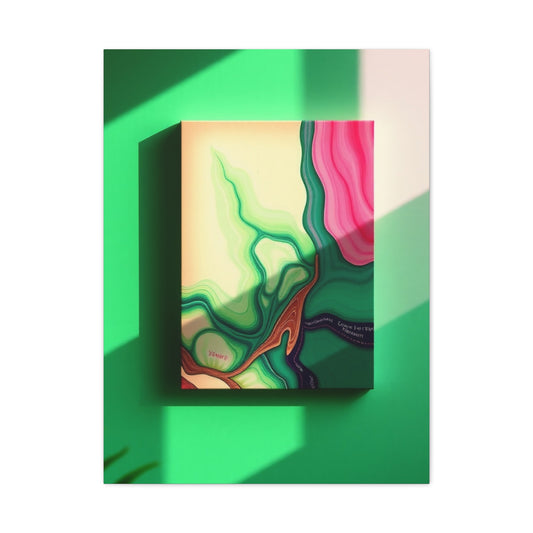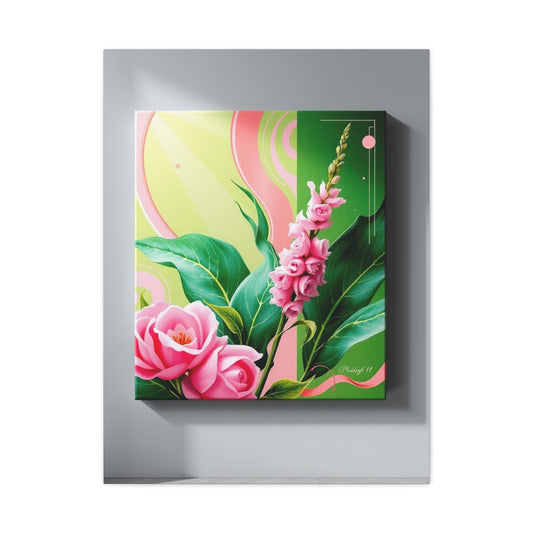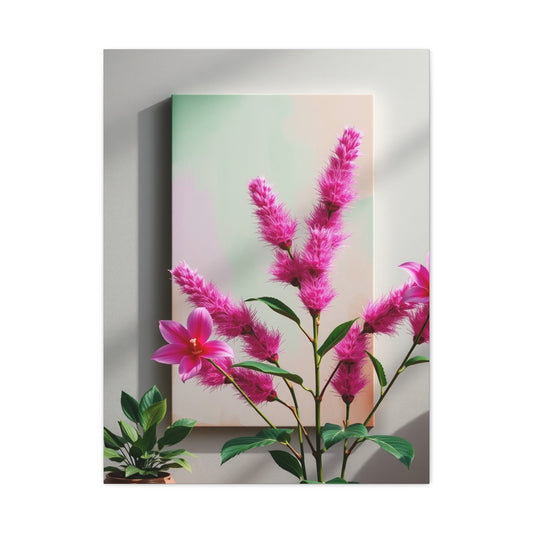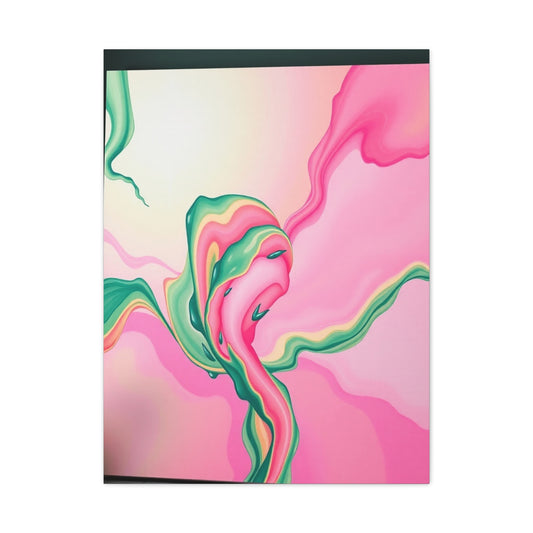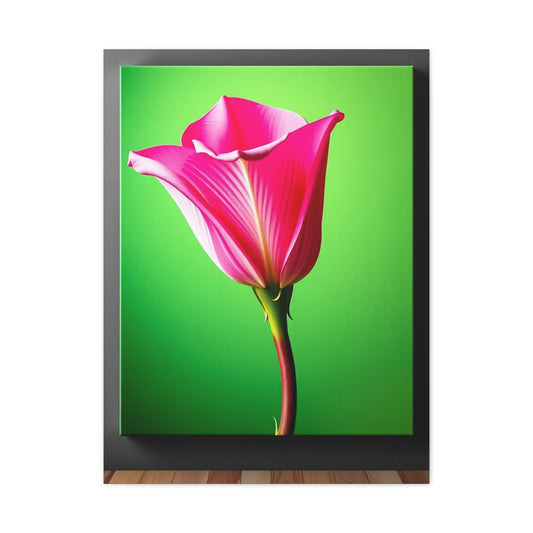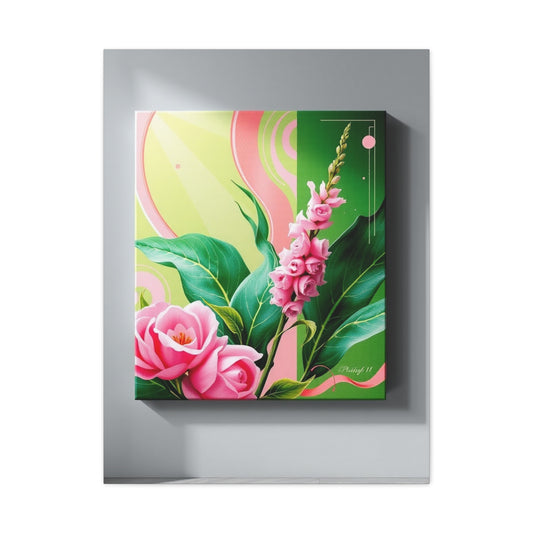-
Green & Pink Canvas Art Supreme Canvas Gallery Wall Art & Canvas Print
Regular price From $141.23 USDRegular priceUnit price per -
Green & Pink Canvas Art Luxury Canvas Wall Art & Canvas Print
Regular price From $141.23 USDRegular priceUnit price per -
Green & Pink Canvas Art Refined Canvas Wall Art & Canvas Print
Regular price From $141.23 USDRegular priceUnit price per -
Elite Green & Pink Canvas Art Vision Wall Art & Canvas Print
Regular price From $141.23 USDRegular priceUnit price per -
Collection Green & Pink Canvas Art Art Wall Art & Canvas Print
Regular price From $141.23 USDRegular priceUnit price per -
Green & Pink Canvas Art Supreme Canvas Wall Art & Canvas Print
Regular price From $141.23 USDRegular priceUnit price per -
Supreme Green & Pink Canvas Art Collection Wall Art & Canvas Print
Regular price From $141.23 USDRegular priceUnit price per -
Vision Green & Pink Canvas Art Art Wall Art & Canvas Print
Regular price From $141.23 USDRegular priceUnit price per -
Masterpiece Green & Pink Canvas Art Vision Wall Art & Canvas Print
Regular price From $141.23 USDRegular priceUnit price per -
Green & Pink Canvas Art Supreme Gallery Wall Art & Canvas Print
Regular price From $141.23 USDRegular priceUnit price per
Elevating Interiors with Pink and Green Wall Art Harmony
In the realm of interior design, colour is never merely decorative; it is atmospheric, psychological, and deeply tied to our lived experiences. Among the multitude of palettes available, the union of pink and green emerges as one of the most captivating. These two hues, stationed far apart on the colour wheel, initially appear to resist one another. Pink is often associated with softness, romance, and a whimsical lightness, while green is bound to nature, stability, and restorative calm. Yet when placed together, the tension between them becomes their greatest strength. The visual contrast stimulates the eye, forging a vibrant dialogue across walls, artworks, and furnishings.
This partnership is not about compromise but a celebration of difference. Where pink brings warmth and emotional resonance, green offers a sense of grounding and balance. The outcome is an interior that feels simultaneously invigorating and serene, playful yet sophisticated. Homeowners and designers who once shied away from clashing palettes are now rediscovering the expressive power of deliberate contrast. The marriage of pink and green has transcended trend status, evolving into a timeless aesthetic language.
A Historical Glimpse into Colour Contrasts
Throughout history, contrasting colour schemes have held an enduring allure. Ancient mosaics in Roman villas combined vivid pigments that echoed the landscapes outside. In the Renaissance, artists experimented with juxtaposition to heighten emotional effect, recognising that opposites on the spectrum could amplify each other’s beauty. The decorative arts of the 19th century embraced contrasts as well, filling interiors with rich tapestries and wallpapers where complementary tones created rhythm and drama.
Pink and green, though not always foregrounded, frequently appeared in these contexts. The floral motifs of Rococo interiors often used delicate pink blossoms against leafy green backdrops, embodying a sense of pastoral romance. In the Art Deco era, jewel-like emeralds contrasted with pale rose tones, lending glamour and modernity. These historical threads remind us that the combination is not new but rather part of a cyclical appreciation for bold visual interplay.
Green as the Anchor
Green carries with it a profound symbolism. It conjures landscapes, growth, and the very breath of life itself. Within interiors, green is known to induce a sense of calm, to restore frayed nerves, and to cultivate an aura of security. Its versatility is astonishing. Sage whispers of tranquillity, olive recalls rustic authenticity, emerald projects opulence, while lime and chartreuse spark bursts of energy.
When applied to walls or furnishings, green can envelop a room with a sense of sanctuary. In artwork, it introduces organic vitality. Pairing it with pink amplifies its qualities, pushing green beyond the role of background shade into an active participant in design storytelling. In some spaces, deep forest greens are used to anchor brighter pinks, stabilising their effervescence. In others, gentle mint tones allow hot pinks to appear more approachable, creating equilibrium without diminishing vibrancy.
The Many Faces of Pink
Pink, often underestimated, reveals remarkable depth upon closer examination. At its palest, it embodies innocence and softness; at its brightest, it exudes exuberance and daring. Blush, fuchsia, coral, and magenta each carry their own resonances, allowing endless flexibility. Psychologists suggest that pink activates a nurturing instinct, eliciting kindness and comfort. Within interiors, this quality becomes palpable as spaces feel warmer, more intimate, and subtly affectionate.
In partnership with green, pink finds new dimensions. It softens the earthiness of moss or olive, and in turn gains gravitas when paired with darker, grounding tones. Neon pink beside vibrant chartreuse becomes electrifying, while muted rose against sage whispers sophistication. This interplay makes the pink-and-green duo particularly effective for wall art, where emotions are conveyed not just through form but through hue itself.
Nature as a Guiding Muse
One reason pink and green feel instinctively harmonious is their presence in the natural world. Blossoms emerging from leafy stems, tropical fruits bursting with colour, or sunsets casting pink shadows over forests—such scenes remind us that these hues have always coexisted. Bringing this palette into interiors is less an invention than a translation of the environments already around us.
Botanical artworks on pink backgrounds provide a striking illustration of this principle. Leaves painted in emerald or jade appear more vivid against pastel rose canvases, almost as if light itself is intensifying their edges. Conversely, soft pink flowers rendered against mossy green fields carry a timeless romance, evoking gardens and meadows. This echo of natural pairings ensures that even the boldest contrasts retain a sense of familiarity.
The Psychological Balance of Clashing Colours
Colour psychology delves deeper into why pink and green make such a powerful pair. Green is tied to balance, often thought of as the midpoint between stimulating warm hues and calming cool tones. It is restorative, evoking spaciousness and open air. Pink leans toward emotional expression, often linked with compassion, gentleness, and a certain youthful vitality. When introduced together, they balance both head and heart.
The human eye naturally seeks contrast, and complementary colours satisfy this craving by creating dynamic harmony. The pink-and-green combination achieves this without slipping into discord because its underlying associations remain positive. A living room painted in a muted sage with accents of blush cushions feels restful yet lively. A hallway lined with vibrant pink and adorned with leafy artwork becomes energising without overwhelming. This duality explains why the palette works so well across diverse interior contexts.
Styling Through Wall Art
One of the most versatile ways to integrate this colour duo is through wall art. Paintings, prints, or photographs become focal points that channel the spirit of the palette without requiring a full-room transformation. Abstract pieces using geometric patterns in pink and green infuse modern energy. Botanical prints layer natural motifs with colour contrasts. Even minimalist compositions employing subtle strokes of rose against verdant backdrops can shift the mood of a space.
The choice of framing also plays a pivotal role. Pale wooden frames can soften the combination, while black or gold frames sharpen its boldness. Clustered arrangements of pink-and-green artworks create visual rhythm, transforming blank walls into curated galleries. For those hesitant to commit large expanses of wall to bold colours, art provides a perfect intermediary—an experimental canvas within the home.
Creating Atmosphere with Scale and Saturation
The impact of pink and green is not only determined by shade but also by proportion and saturation. A room drenched entirely in neon tones might overwhelm, while subtle infusions create balance. Designers often speak of the 60-30-10 rule, where one dominant colour is complemented by a secondary and accented by a tertiary. In a pink-and-green scheme, either hue can take the lead.
Imagine a dining room painted in muted olive, punctuated with blush dining chairs and abstract art weaving both colours together. Alternatively, envision a bedroom washed in dusty pink, its tranquility enhanced by emerald textiles or leafy prints. Playing with saturation also alters atmosphere: pastel pairings cultivate calm serenity, while saturated duos exude confidence and dynamism. By consciously adjusting scale and tone, homeowners can tailor mood with remarkable precision.
The Cultural Resonance of Colour
Beyond aesthetics, colour carries cultural meanings that influence perception. In many traditions, green symbolises renewal and fertility, while pink evokes love, celebration, and compassion. Together, they weave narratives that transcend borders. In tropical contexts, the pairing echoes lush landscapes and exotic blossoms. In urban settings, it feels refreshingly unconventional, challenging neutral palettes often associated with modern interiors.
Artworks that highlight these cultural echoes invite layered interpretation. A photograph capturing vibrant textiles, a painting inspired by blossoms against verdant backdrops, or an abstract study of clashing hues—all reflect not only design sensibilities but cultural memory. Interiors styled with such works become more than spaces to inhabit; they become curated stories of colour, culture, and identity.
The Subtle Art of Balance
While the pink-and-green palette is powerful, it requires sensitive handling to avoid tipping into excess. Balance is not about equal parts but about thoughtful orchestration. A small pop of hot pink against muted green walls may carry more impact than a room divided evenly between the two. Likewise, a single striking artwork can anchor a space more effectively than scattering multiple conflicting pieces.
Texture also plays a crucial role. Velvet cushions in blush tones paired with rough-hewn wooden furniture in mossy shades create tactile contrast that mirrors the visual. Smooth ceramics glazed in emerald paired with delicate pink glassware infuse subtlety. By layering texture with colour, interiors achieve depth that extends beyond surface-level contrast.
A Timeless Invitation
The rise of pink and green interiors is not a fleeting novelty but a rediscovery of enduring truths about colour. Contrasts enliven us, differences enrich us, and boldness rewards those who embrace it. By bringing these hues together in art, textiles, and wall treatments, homes evolve into expressions of personality and imagination.
What makes the combination timeless is its adaptability. It can be gentle or dramatic, traditional or contemporary, minimal or abundant. Its success lies in its ability to honour the individuality of each space while transforming it into something more layered and intriguing. For those willing to explore its possibilities, the palette offers an invitation to move beyond the safe and expected into the richly rewarding terrain of contrast.
The Language of Colour in Living Spaces
Colour is one of the most potent design elements because it influences both perception and mood. Beyond simple decoration, it serves as an atmospheric force, shaping how a room feels the moment one steps inside. When two hues as distinct as pink and green come together, they create a vivid dialogue that engages the senses. The interaction is neither passive nor subdued; it is charged with energy, a constant interplay between softness and vitality.
In interiors, this duality becomes a language of expression. Green evokes the outdoors, symbolising growth, continuity, and equilibrium. Pink channels tenderness, affection, and emotional resonance. Together, they form a palette that transforms domestic environments into spaces where contrasts converge seamlessly. The dynamism they generate captures attention, yet their underlying associations remain gentle, making them suitable for homes that strive to feel both grounded and inviting.
Shades and Subtleties That Define Character
Not all pinks and greens are created equal. The richness of this colour pairing lies in the spectrum of variations available. Pale blush can evoke the delicate petals of spring blossoms, while intense fuchsia radiates exuberance. Similarly, the spectrum of green stretches from muted sage, reminiscent of countryside foliage, to deep emerald with its regal undertones.
The combination of these shades dictates the overall character of a room. A pastel pairing tends toward tranquility, perfect for bedrooms or meditative corners. Bold magenta set against chartreuse creates an electric, avant-garde impression suited for creative studios or dynamic living spaces. Even subtle adjustments in tone shift the emotional register of the interior. By layering multiple shades within a single environment, one can achieve depth and rhythm that continually reveals itself.
The Role of Natural Light in Colour Expression
Light dictates how colours reveal themselves. Morning sunlight has a cooler clarity, while evening light introduces golden warmth. In a room styled with pink and green, these fluctuations can dramatically alter perception. A dusty rose wall might appear gentle in daylight but deepen into romantic richness by candlelight. Emerald accents may gleam like precious stones under bright bulbs yet recede into calm neutrality at dusk.
Designers often emphasise the necessity of testing colours under varying light conditions. This is especially critical when working with a contrasting palette. Too much brightness might intensify the clash, while dimness can obscure the vibrancy. Properly balanced, natural light enhances the harmonious dance between pink and green, allowing them to complement rather than compete.
Emotional Resonance Through Wall Art
Art has long been a medium for emotional communication, and when colour is the vehicle, it becomes even more powerful. Pink and green artworks resonate because they speak simultaneously to the intellect and the heart. Abstract canvases filled with broad strokes of these hues can create a visceral impact, embodying joy, vitality, or contemplative calm. Botanical pieces, with their roots in natural imagery, deliver familiarity while heightening visual delight.
Photographic works can also embody this colour scheme. Urban scenes where vibrant walls meet leafy elements, cultural festivals adorned in radiant fabrics, or simple still-life compositions—all bring authenticity to interiors. Hanging such pieces is not just an act of decoration but a declaration of atmosphere, guiding the tone of the entire space.
Balancing Boldness with Subtlety
Introducing clashing hues requires sensitivity. While the contrast of pink and green is naturally alluring, it must be handled with care to prevent visual dissonance. One effective method is to allow one colour to dominate while the other punctuates as an accent. A living room wrapped in muted green walls might gain vibrancy from blush cushions, throws, or framed artwork. Conversely, a pale pink backdrop could feel anchored by moss-hued furniture or dark green ceramics.
Texture plays an equally important role in achieving balance. Smooth pink walls paired with rough-hewn green wooden furniture create a tactile juxtaposition. Glossy emerald tiles against matte rose textiles introduce dimension. This layering ensures that the palette feels dynamic rather than overwhelming, creating depth beyond the surface.
Cultural Symbolism Embedded in Colour
Every colour carries cultural meaning, shaping perception beyond the immediate aesthetic. Green often symbolises renewal, fertility, and harmony across various traditions, while pink is frequently tied to love, festivity, and tenderness. Together, they form narratives that resonate universally yet manifest uniquely in different contexts.
In tropical climates, the pink-and-green palette echoes the abundance of flora, fruit, and vibrant landscapes. In more urbanised settings, it feels daring and unconventional, disrupting the monotony of neutrals with exuberance. This cultural layering enhances the palette’s ability to tell stories, making each space a canvas of both personal and collective meaning.
Abstract Interpretations of the Duo
For those who seek innovation in interiors, abstract art offers endless possibilities with pink and green. Unlike representational pieces, abstract works are less constrained by subject matter, allowing colour itself to become the protagonist. Broad stripes of emerald colliding with strokes of coral pink can convey rhythm and dynamism. Geometric arrangements that juxtapose rose against moss create structural harmony.
Abstract interpretations provide flexibility across interiors. They suit minimalist spaces by adding controlled vibrancy, while eclectic environments embrace them for their expressive freedom. Their strength lies in their ambiguity: each viewer brings their own emotional response, ensuring the artwork remains perpetually engaging.
The Role of Scale in Creating Atmosphere
Scale alters how colours are perceived. A small artwork in pink and green may serve as a charming accent, while a large mural can dominate the atmosphere of an entire room. Oversized canvases carrying intense hues can transform otherwise neutral interiors into immersive experiences. Conversely, smaller decorative elements such as vases, cushions, or prints can introduce the palette without overwhelming.
When incorporating scale, proportion becomes vital. Large surfaces require careful tonal selection—muted greens or dusty pinks may prove more sustainable than neon bursts. Smaller accents, however, allow for playful experimentation with saturated shades. By calibrating scale, interiors can shift between subtle sophistication and bold theatricality.
Botanical Inspiration in Design
The natural world continually validates the pink-and-green partnership. Flowers such as orchids, peonies, and lilies offer direct inspiration, their blossoms creating stunning contrast against verdant foliage. Translating this imagery into interiors can take the form of botanical prints, floral wallpapers, or even live plants set against painted backdrops.
Houseplants placed against blush walls instantly become focal points. Succulents or palms in rooms with rose-coloured accents highlight the timeless connection between organic greens and human creativity. Such incorporations blur the boundary between the natural and the designed, reminding inhabitants that the inspiration for colour harmony often lies just outside the window.
Evoking Atmospheres Across Rooms
The adaptability of pink and green allows them to function across diverse environments. In a bedroom, softer tones such as sage and blush cultivate tranquility, perfect for rest. In dining rooms, bolder contrasts like emerald and fuchsia stimulate energy and conversation. Bathrooms often benefit from mint tones paired with coral pink for freshness and rejuvenation.
Hallways, frequently overlooked in design, become transformative when adorned with artwork combining these hues. Even small spaces can carry immense personality when treated with colour as an intentional design element. The versatility ensures that every room, regardless of size or purpose, can benefit from the palette’s expressive energy.
Sustaining the Palette Over Time
The key to timeless design is adaptability, and the pink-and-green palette excels in this regard. Unlike fleeting trends, its foundation in natural contrasts and cultural resonance allows it to remain relevant across decades. Adjustments in shade, texture, and scale ensure it evolves with changing tastes.
Sustainability also plays a role. By incorporating natural materials such as wooden frames, clay vessels, or woven textiles, the colours gain longevity through tactile authenticity. Investing in versatile artworks or furnishings within this palette ensures they can transition seamlessly across evolving interior styles, from modern minimalism to eclectic maximalism.
Colour as an Emotional Catalyst
Interiors are more than the arrangement of walls and furnishings; they are theatres for emotional experiences. Colour, as the most immediate element of design, sets the stage. When pink and green unite in a room, they do more than decorate: they stir memory, evoke mood, and sculpt atmosphere. The visual spark of contrast animates the environment, drawing attention to the interplay of tones and textures.
Green carries associations of renewal, stability, and the natural world, while pink emanates warmth, tenderness, and joy. Together they weave a dialogue of balance—structure meets softness, vitality meets intimacy. This partnership provides fertile ground for creating interiors that resonate not only visually but also psychologically, ensuring that rooms do not just look attractive but feel deeply inhabitable.
Variations in Tonality and Atmosphere
The character of a room lies in the shades chosen. Pale pink layered with soft mint produces serenity, almost whisper-like in its calmness. Coral paired with sage introduces sophistication, a harmony that feels timeless and poised. Neon pink clashing with lime green, by contrast, generates an atmosphere of exuberance, pushing boundaries into playful daring.
Saturation, too, shapes emotional resonance. Subdued tones invite relaxation, while highly saturated colours excite and stimulate. Designers often orchestrate tonal gradations—layering light, medium, and dark values within the same palette—to create rhythm across surfaces. The eye naturally follows this progression, engaging with the room as if it were a visual composition.
The Role of Contrast in Design
Contrast is a principle of design that breathes life into interiors. Without it, spaces risk monotony. The pairing of pink and green exemplifies contrast in its purest form. Situated far apart on the colour wheel, the two colours activate each other when placed side by side. This creates vibrancy without the need for elaborate ornamentation.
Contrast is not restricted to hue. Matte against gloss, rough against smooth, light against dark—these layers amplify the dialogue between pink and green. A velvet blush armchair set against a deep green tiled wall speaks through both colour and texture. In this way, interiors acquire richness that extends beyond surface decoration, offering inhabitants an ever-evolving sensory experience.
Wall Art as the Mediator of Clashing Hues
One of the most effective avenues for introducing bold palettes is through wall art. Artworks offer flexibility, allowing colour to be tested, celebrated, or tempered. Pink and green wall art embodies contrast in a contained frame, transforming a bare surface into a focal point without requiring structural changes to the room.
Botanical paintings highlight natural synergies, placing vibrant blossoms against leafy expanses. Abstract pieces intensify contrast with geometric planes of colour. Photography captures the palette as it appears in the world—urban murals, lush gardens, or cultural celebrations. Each medium conveys the relationship between the hues differently, ensuring that the same palette can serve diverse stylistic intentions.
Light as a Transformative Element
The same artwork can look dramatically different under changing light. A soft pink canvas may glow warmly in daylight, yet acquire a cooler edge under artificial illumination. Green pigments often shift under different bulbs, appearing fresher under cool light and richer under warmer tones.
Interior designers often view light as the silent collaborator in design. It animates colour, shaping the emotional tone of a room across the day. When styling pink-and-green artworks, positioning relative to windows and lamps is crucial. Shadows, highlights, and reflections become part of the overall composition, ensuring that the colours never remain static but continually transform.
Psychological Equilibrium
The success of pink and green lies partly in psychological balance. Green is associated with stability, a colour that reassures and grounds. Pink, by contrast, activates emotions linked with affection and comfort. Together, they establish equilibrium—too much green might feel heavy or sombre, while too much pink could veer into frivolity. Their union ensures neither overwhelms, creating a gestalt greater than its parts.
This balance can be tailored depending on intention. Workspaces might favour dominant green with pink accents to encourage calm focus tempered by warmth. Social areas might invert this, letting pink dominate to generate convivial energy, softened by green undertones. The adaptability makes the palette suitable for diverse functional spaces, from kitchens to studios.
Abstract Approaches to Design
Abstract art introduces freedom into interiors, and pink and green thrive within this creative realm. Stripes, splashes, or layered planes of these hues free them from literal associations, transforming colour itself into subject matter. In such works, viewers interpret meaning through sensation rather than representation.
When displayed in interiors, abstract pink-and-green pieces offer versatility. Minimalist rooms benefit from their injection of controlled vibrancy, while eclectic environments embrace their unpredictability. Each viewing reveals new relationships between line, texture, and hue, ensuring the artwork remains perpetually engaging. For inhabitants, these pieces become visual meditations on contrast and cohesion.
The Influence of Scale on Perception
The scale of colour presence changes its impact. Large walls painted in bold hues command immediate attention, transforming the room into an immersive experience. Smaller accents—vases, cushions, or framed artworks—whisper rather than shout, offering subtle nods to the palette.
Balancing scale is essential in preventing oversaturation. A vast mural of neon pink and lime green might electrify but quickly fatigue the senses. Conversely, a handful of delicate rose and sage accessories might soothe but lack impact. Successful design orchestrates scale, balancing expansive treatments with smaller details to maintain harmony.
Botanical Inspirations in Art and Décor
Nature has long been the guide for harmonious palettes. Pink blossoms set against leafy backdrops illustrate why the two hues cohere instinctively. Translating this imagery into interiors bridges the natural and designed worlds. Paintings of orchids, succulents, or wildflowers channel organic beauty. Houseplants placed against pastel pink walls become living artworks, their foliage animated by the coloured backdrop.
Even in non-representational art, botanical influences linger. Abstract renderings of leaves or floral forms in pink-and-green palettes hint at natural origins while retaining modern stylisation. The result is an interior that feels simultaneously rooted in the earth and lifted by imagination.
Cultural Narratives of Colour Pairings
Colour carries symbolic weight across cultures. Green often represents renewal, prosperity, and life, while pink evokes festivity, tenderness, and joy. Their combination can therefore tell layered stories, resonating differently depending on cultural context.
In some settings, the palette mirrors landscapes brimming with vitality; in others, it feels boldly unconventional, challenging restrained palettes. Through art and décor, these colours offer a visual narrative that bridges tradition and modernity. Rooms styled with pink and green become sites of cultural dialogue, reflecting values as well as aesthetics.
The Subtle Science of Proportion
Beyond simple selection, proportion determines the success of colour combinations. A room evenly divided between pink and green may feel static, as though the colours compete. By contrast, allowing one hue to dominate while the other punctuates creates hierarchy and flow.
For instance, a predominantly sage dining room with hints of coral art feels stable with bursts of warmth. Conversely, a bedroom washed in blush with mossy accents exudes softness anchored by grounding undertones. Proportion ensures the eye has a clear focal point, guiding visual movement across the space.
Materiality and Texture as Enhancers
Colour does not exist in isolation; material amplifies its effect. A glossy emerald ceramic bowl has a different resonance than a matte green textile. Velvet in blush pink exudes luxury, while pale pink linen suggests airiness. Combining materials multiplies the sensory impact, ensuring interiors are felt as well as seen.
Designers often layer material contrasts—metallic frames around pink-and-green artworks, wooden furniture against pastel walls, or stone surfaces with coloured accessories. These material juxtapositions heighten depth, transforming spaces into multisensory environments.
Creating Rooms That Evolve
An enduring interior is one that adapts. The pink-and-green palette excels in longevity because it can evolve with shifting tastes. Muted versions suit minimalist aesthetics, while bold iterations align with maximalist tendencies. The same artwork or furnishing can migrate from one style to another, proving its adaptability.
The palette’s durability also comes from its natural foundation. As long as gardens blossom and landscapes thrive, pink and green will remain relevant. Their cyclical appearance in history suggests not a fleeting trend but a recurring appreciation for the vitality of contrast.
Designing with the Duality of Pink and Green
Colour within a home is never random; it is a reflection of personality, memory, and lived identity. When pink and green share the same space, they establish a dialogue that is deeply expressive, inviting inhabitants to consider how contrasts can reveal character. Pink carries associations of affection, gentleness, and spirited joy. Green represents grounding, vitality, and balance. Together, they form a palette that simultaneously stabilises and excites.
For some, this pairing channels nostalgia—reminders of gardens, blossoms, or cherished interiors from childhood. For others, it embodies forward-looking daring, a break from safe neutrals into a more experimental world. The combination functions as both personal and universal, aligning private memories with collective appreciation for natural contrast.
Nuances in Tone and Emotional Register
The mood of a room shifts dramatically depending on the tones chosen. Blush pink paired with moss green cultivates serenity, evoking meadows at dawn. Hot pink juxtaposed with emerald bursts with exuberance, daring the eye to remain still. Coral and sage blend tradition with contemporary chic, a versatile harmony suited for both casual and formal spaces.
Tonal layering enhances depth. By combining multiple variations of pink and green within one interior—perhaps blush textiles, emerald artworks, and sage ceramics—rooms acquire richness akin to a symphony rather than a single note. The eye dances from one hue to another, continually discovering nuance. This creates a sense of movement, ensuring the interior never feels static.
The Role of Contrast as a Design Principle
Contrast lies at the heart of successful design, and pink with green exemplifies this principle with clarity. These colours are distant relatives on the spectrum, but their opposition heightens their individual strengths. When set side by side, each appears more vibrant, more alive.
Contrast is not merely visual; it is experiential. A room where smooth blush walls meet textured green furnishings engages both sight and touch. A matte olive vase filled with glossy pink flowers delivers multisensory interplay. These layers prevent monotony, ensuring interiors feel rich and engaging. The deliberate embrace of opposition becomes a form of unity.
Wall Art as a Vehicle of Transformation
Wall art provides one of the most accessible pathways to exploring this palette. Paintings, prints, and photographs capture the pink-and-green dialogue within frames, making them versatile tools for transforming spaces. They can be hung as focal points or clustered into curated galleries, adjusting scale and emphasis with ease.
Abstract artworks allow colour to dominate, transforming pink and green into the very subject of composition. Botanical pieces capture the natural affinity between blossoms and foliage, delivering timeless elegance. Photographic works introduce authenticity, presenting moments where these hues collide in urban walls, tropical markets, or festive rituals. Each medium becomes a portal through which the palette can be explored without overwhelming the entire room.
The Influence of Lighting Across Spaces
Lighting alters how pink and green express themselves. In bright natural daylight, mint and blush may feel airy and refreshing, while under evening lamps, they take on intimacy and warmth. Emerald deepens under golden light, while coral intensifies under cooler tones.
Strategic lighting ensures the palette maintains balance. Spotlights directed at a pink-and-green artwork can intensify its role as a focal point. Ambient light spread evenly across a sage room softens contrast, creating tranquility. The choreography of light, shadow, and hue elevates interiors into dynamic environments that shift character throughout the day.
Psychological Dimensions of the Duo
The psychology of colour underpins why this palette feels compelling. Green is restorative, echoing the safety and expansiveness of nature. It slows heart rates, reduces tension, and creates spaciousness. Pink, on the other hand, engages the emotions, encouraging kindness and comfort. When united, they strike an equilibrium, stimulating without overwhelming.
Different ratios generate different effects. Workspaces may benefit from dominant green with touches of pink to maintain calm while preventing sterility. Social spaces may invite more pink, encouraging conversation and convivial energy, with green undertones to stabilise. Bedrooms might weave pastel versions of both, creating restful serenity. These psychological foundations ensure the palette is not just decorative but functional.
Abstract Creativity in Pink and Green
Abstract interpretations of colour encourage innovation. By stripping away literal subject matter, colour itself becomes the narrative. Sweeping gestures of magenta against fields of olive create rhythm, while geometric planes of coral and sage establish structure.
Displayed within interiors, abstract pink-and-green works offer interpretive freedom. One viewer might perceive vibrancy, another calm. Their ambiguity keeps them perpetually relevant, adapting to the changing moods of those who inhabit the space. This adaptability makes them valuable for long-term design, as they rarely become static or predictable.
Proportion and Scale in Colour Application
How much pink and how much green appear in a room determines balance. Equal distribution often results in competition, leaving the eye without hierarchy. Allowing one hue to dominate while the other punctuates creates harmony.
A sage living room punctuated by coral cushions has stability with bursts of life. A blush hallway anchored by emerald frames balances softness with gravitas. Scale magnifies this dynamic—large surfaces require subtler shades for sustainability, while small accents can embrace saturated vibrancy without fatigue. Proportion is therefore not simply mathematical but emotional, guiding how rooms feel over time.
Botanical Inspirations That Never Fade
Nature continues to be the eternal muse for pink and green interiors. Blossoms against foliage exemplify why the colours harmonise instinctively. Translating this into design brings timelessness, grounding bold choices in the familiar.
Houseplants against rose walls become living artworks, their organic textures enriched by the backdrop. Botanical prints expand this principle, offering stylised interpretations of natural motifs. Even sculptural décor echoing floral or leafy forms within this palette ensures interiors retain a sense of rooted authenticity while embracing artistic interpretation.
Cultural Narratives and Symbolic Depth
Every colour carries symbolic meaning, and their union multiplies resonance. Green often signifies prosperity, rebirth, or vitality across traditions. Pink frequently symbolises affection, festivity, or compassion. Together, they form cultural narratives that can be universal yet interpreted uniquely depending on context.
In some regions, the pairing echoes lush tropical abundance. In others, it feels daring, even rebellious, breaking free from monochrome or neutral traditions. This layered symbolism enriches the palette’s expressive potential, ensuring that it communicates beyond aesthetic beauty into cultural meaning and identity.
Materiality as a Companion to Colour
Material enhances the way colour is experienced. A velvet magenta sofa conveys luxury, while a linen blush curtain suggests delicacy. A ceramic emerald bowl feels glossy and sleek, while a woven moss textile conveys earthiness. When pink and green are filtered through diverse materials, their character shifts dramatically.
Designers use this interplay to craft multisensory depth. Wooden frames for pink-and-green artworks add organic grounding. Metallic accents, such as brass against blush or copper near emerald, heighten sophistication. By layering materiality, interiors transform colour from mere pigment into tangible experience.
The Palette’s Role in Modern Adaptability
What ensures the longevity of pink and green is adaptability. Minimalist interiors adopt muted versions for understated elegance. Maximalist spaces embrace bold saturation, celebrating exuberance. The same palette, adjusted in tone and texture, suits both rustic cottages and sleek metropolitan lofts.
This versatility secures its role as more than a fleeting fashion. It evolves alongside changing tastes, absorbing new styles while retaining its essential vitality. The palette remains not only relevant but endlessly renewable, just as its natural inspirations continually regenerate.
The Enduring Legacy of Pink and Green in Interior Design
Every interior tells a story, and colour is its most immediate language. Pink and green together form a narrative that is layered, expressive, and profoundly human. Their juxtaposition evokes nature’s rhythms—flowers against leaves, fruit against foliage—while simultaneously defying expectation through contrast. They stand at opposite points on the spectrum, yet instead of discord, they create dialogue. This interplay captures the imagination and transforms rooms into visual poems.
The endurance of this palette lies in its ability to adapt. It has appeared across centuries in decorative arts, resurfaced in different cultural contexts, and continues to evolve with contemporary sensibilities. The story of pink and green is not fixed; it is an ongoing narrative that reinvents itself with each generation, each home, and each artwork.
Tonal Choices That Shape Atmosphere
The atmosphere of a space depends on the shades selected. A whispering blush paired with pale mint brings ethereality, reminiscent of spring mornings. Coral pink alongside olive introduces timeless sophistication, hinting at classical gardens. Hot pink against neon green electrifies, producing intensity suited for bold personalities.
Subtle changes in tone shift the emotional register. Muted hues suggest tranquility, while saturated tones demand attention. By layering multiple shades across furnishings, textiles, and artworks, a sense of rhythm develops. Rooms become compositions rather than static environments, with colour moving like music through the space.
The Role of Contrast in Human Perception
The eye seeks contrast. It is contrast that animates vision, allowing form and colour to emerge with clarity. Pink and green embody this principle as they sit across the wheel from each other. Their placement ensures vibrancy, a visual spark that stimulates interest.
But contrast extends beyond colour. Rough textures against smooth finishes, matte tones against glossy surfaces, light shades beside dark ones—these layers heighten the overall effect. A soft pink linen curtain near a deep green leather chair engages both sight and touch. These juxtapositions enliven interiors, preventing monotony and inviting continuous exploration.
Wall Art as a Catalyst for Transformation
Wall art remains the most versatile conduit for introducing pink and green into interiors. A single piece can alter the entire mood of a room. Abstract compositions allow colour to dominate, becoming the central message. Botanical artworks evoke familiarity, translating blossoms and leaves into timeless imagery. Photographs present authenticity, capturing real-world intersections of these hues in landscapes or urban scenes.
The scale of wall art determines impact. Large canvases immerse the viewer, demanding attention, while smaller works provide subtle punctuation. Arranging multiple pieces together creates rhythm, guiding the eye across walls as if reading a visual symphony. With careful placement, pink and green artworks can either anchor a room or infuse it with accents of playful energy.
Light as a Silent Collaborator
Colour cannot be separated from light. Daylight shifts constantly, altering perception from dawn to dusk. A pale pink wall glows with softness in morning brightness, yet deepens into intimacy as evening shadows fall. Emerald green sparkles under crisp light but mellows under golden lamps.
Artificial lighting expands this variability. Cool-toned bulbs enhance freshness, while warm-toned illumination amplifies coziness. Strategic positioning of light sources ensures that pink and green reveal their best qualities. Spotlights can dramatise an artwork, while diffused lighting softens contrasts across an entire room. Light is the unseen collaborator that animates every shade.
Psychological Harmony Between Opposites
The psychological foundation of this palette explains its broad appeal. Green represents balance, renewal, and stability. It lowers tension, providing calmness akin to a walk in nature. Pink stimulates emotions linked with tenderness, joy, and warmth. Together, they bridge intellect and emotion, stability and affection.
Rooms styled with dominant green accented by pink encourage focus while retaining softness. Spaces saturated in pink with hints of green feel lively yet grounded. This adaptability allows the palette to support multiple functions—from restful bedrooms to social living rooms—always maintaining equilibrium.
Abstract Explorations of Colour
Abstract art distills colour into pure expression. Without literal subjects, pink and green emerge as characters in their own right. Broad sweeps of fuchsia across mossy fields create intensity, while structured bands of coral and sage generate a measured rhythm.
Within interiors, such pieces serve as both decoration and meditation. Their ambiguity invites interpretation: one viewer may see energy, another calm. This interpretive freedom ensures they never become redundant. Abstract pink-and-green works grow with their environments, continually reframing the dialogue between hues.
Scale and Proportion in Creating Harmony
Proportion governs the success of colour pairings. Equal amounts of pink and green may feel competitive, leaving the eye unsettled. Allowing one hue to lead while the other provides accents creates order.
A living room dominated by sage, with blush textiles as highlights, exudes calm sophistication. Conversely, a blush backdrop anchored by emerald furnishings radiates warmth tempered by gravity. Scale also dictates sustainability—large surfaces benefit from muted tones for longevity, while smaller accents can embrace saturation without risk of fatigue. This careful calibration ensures interiors remain engaging without overwhelming.
Botanical Roots of the Palette
Nature has always justified the harmony of pink and green. Blossoms against foliage, fruit ripening among leaves, and sunsets spilling pink light over forests illustrate why the two hues coexist instinctively. Translating these natural pairings into interiors brings familiarity, grounding bold design in authenticity.
Houseplants thrive as companions to pink walls, becoming sculptural elements within rooms. Botanical prints extend this principle, offering stylised echoes of organic life. Even decorative objects that reference leaves or petals ensure interiors maintain a connection to natural origins. This rootedness makes the palette timeless, as it mirrors cycles that continually renew.
Cultural Resonances Across Traditions
Colours are never neutral; they carry symbolic associations across traditions. Green often represents prosperity, fertility, and renewal. Pink is linked with celebration, affection, and vitality. Their union produces layered meaning, communicating abundance, joy, and harmony.
In some cultural contexts, the combination mirrors landscapes filled with vibrancy and lush growth. In others, it challenges convention, offering rebellion against restrained palettes. This multiplicity of meanings enriches interiors, ensuring they are not merely visual arrangements but also cultural narratives.
Materiality as a Partner to Colour
The experience of colour is inseparable from material. Velvet in blush conveys sumptuousness, while linen in the same shade suggests delicacy. A glossy emerald ceramic bowl gleams with sophistication, while a woven moss textile feels earthy and grounded.
Pairing diverse materials within the pink-and-green palette multiplies sensory resonance. Wooden furniture against pastel walls introduces warmth. Metallic accents, such as copper or brass, alongside these hues, heighten elegance. Materiality transforms colour into texture, making interiors not only seen but also felt.
Adaptability Across Styles
One of the great strengths of this palette is its adaptability. In minimalist interiors, muted pinks and greens provide subtle elegance, avoiding excess. In maximalist settings, saturated fuchsia and neon lime celebrate extravagance. Rustic spaces embrace earthy tones, while modern lofts revel in bold contrasts.
The same palette can evolve with shifting tastes. A blush-and-sage combination may later give way to coral and emerald, with artworks and furnishings migrating across changing styles. This adaptability ensures the palette does not fade with passing fashions but endures as a timeless tool for expression.
An Enduring Invitation
The enduring legacy of pink and green in interiors lies in their paradoxical unity. They are opposites that reconcile, differences that enhance rather than conflict. By embracing this palette, designers and homeowners step into a world where contrast is not feared but celebrated.
Through wall art, textiles, or architectural details, pink and green become more than colours; they become a philosophy of balance. They demonstrate that harmony does not require sameness, and beauty often emerges from the meeting of contradictions. The palette endures not because it is safe, but because it is daring, adaptable, and deeply human.
Conclusion
The journey of pink and green in interior design reveals more than a colour combination; it embodies the art of balance and contrast. These hues, drawn from both nature and imagination, prove that opposites can coexist to create interiors filled with vitality, serenity, and personality. Green anchors spaces with stability and renewal, while pink infuses warmth, joy, and tenderness. Together, they form a palette that adapts across styles, from minimalist calm to maximalist exuberance, always offering new ways to reimagine home environments. Their versatility in wall art, furnishings, and abstract compositions ensures they remain timeless rather than transient. More than a trend, the dialogue between pink and green is a reminder that harmony often emerges from contrast, and beauty is most profound when shaped by diversity. In embracing this duo, interiors become more than decorated spaces—they transform into living expressions of emotion, culture, and creativity.

